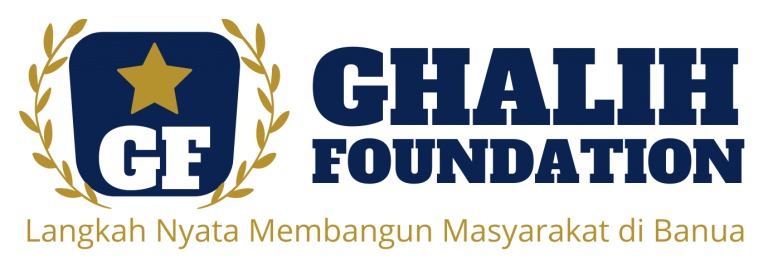DESAIN MODIFIKASI AC SPLIT MENJADI AC SISTEM GEOTERMAL SISTEM TERBUKA
Keywords:
Geotermal system terbuka, Modifikasi, AC splitrAbstract
Sistem Pengkondisian udara adalah sistem yang digunakan untuk mengkondisikan udara sesuai dengan rancangan yang diinginkan. Penggunaan alat pengkondisian udara ini seperti pada gedung dan rumah tempat tinggal. Jenis pengkondisi udara yang biasa dipakai di rumah maupun kantor adalah jenis AC split. AC sistem geotermal adalah teknologi pengkondisian udara yang memanfaatkan suhu bumi. Terdapat 2 jenis pengkondisian system geothermal. Yaitu system terbuka dan system tertutup. Telah dilakukan penelitian tentang modifikasi AC split menjadi AC system geothermal, menggunakan system tertutup. Permasalahan yang muncul adalah bagaimana jika terdapat lokasi yang dapat memfasilitasi penggunaan system geothermal system terbuka. Tentu hal ini akan lebih mudah dan murah untuk diterapkan dibanding system tertutup, dengan catatan pendukung system terbuka tersedia secara cuma-cuma. Desain ini dilakukan untuk memberikan alternative pengkondisian udara system geothermal Berdasarkan pembahasan, dapat diambil kesimpulan bahwa pengkondisian udara dengan modifikasi AC split menjadi system geothermal system terbuka dapat dilakukan jika terdapat kolam / sungai / danau didekat gedung yang menggunakan AC split, dan implementasi modifikasi AC split memungkinkan peningkatan efisiensi penggunaan energy pada gedung / rumah tersebut. Â
Â
Downloads
References
2. Cengel, Y. A., and Boles, M. A. 2006. Thermodynamics: An Engineering Approach, 5th ed. McGraw-Hill
3. Clement, R., et al. 2012. Modelling and Analyse of a Direct Expansion Geothermal Heat Pump (DX) : part 1 Modelling of Ground Heat Exchanger. Notre-Dame Qouset Montreal (Quebec) : Canada
4. Cocchi, S., Castellucci, S., dan Tucci. 2013. Modelling of an Air Conditioning System With Geothermal Heat Pump for a Residential Building. Hindawi Publishing Corporation Mathematical Problem in Engineering. Vol.2013. Article ID 781231,
5. Stoecker, W.F., Jones,W.N. 1982. Refrigeration and Air Conditioning. The McGaw-Hill, Inc. New York.
6. Jindal T.K., 2012. Analysis of Heat Transfer Through A Duct Of Geothermal Cooling and Heating System. International Journal of Emerging Technology and Advanced Engineering. Vol. 2. Issue 10. Oct. 2012. pp 284-287
7. Kasich, J.R. dan Taylor, M. 2012. Recommendations for Geothermal Heating and Cooling Systems. Ohio Water Resource Council : Ohio
8. Mali, S.N., More, A.B., Patil, D.S. 2014. Application of Geothermal Cooling Tchniques to Improve Thermal Condition of Residential Building. International Journal of Civil and Structural Engineering Research. Vol.2. Issue 1. April-September 2014, pp 158-161
9. Masheiti, S., dan Agnew, B. 2010. Thermodynamic Simulation Modelling of Low Temperatur Geothermal Source Located in Arid-Zone Area North Africa. Jordan Journal of Mechanical and Industrial Enginering. Vol.4. No.1. Jan. 2010. pp 61-68
10. Miller, R. 2006. HVAC Troubleshooting Guide. The McGraw-Hill Companies, Inc. : New York
11. Moran, M., J, Saphiro. 2006. Fundamentals of Engineering Thermodynamics. Jhon Wiley & Sons, Inc. : London
12. Widiyatmoko. 2014. Studi Literatur Tentang Sistem Pendingin dengan Pertukaran Langsung (Direct Exchange) geothermal dan air sebagai refrigerant. Vol.6. No.1. Okt 2015. pp 7-14
13. Widiyatmoko, Irawan, F. 2017. Modifikasi AC Split Menjadi AC Sistem Geotermal Menggunakan Air sebagai Refrigeran Sekunder. Vol 9. April 2017. pp 1-10
14. Zakaria, T. 1991. AIR CONDITIONING & REFRIGERATION. ITB : Bandung
15. https://www.epa.gov/rhc/geothermal-heating-and-cooling-technologies, diakses 4 Agustus 2018
16. http://iter-geo.eu/shallow-geothermal-systems-how-extract-inject-heat-into-ground/, diakses 12 Oktober 2018
Downloads
Published
How to Cite
Issue
Section
License
The Authors submitting a manuscript do so on the understanding that if accepted for publication, Authors retain copyright and grant the AUSTENIT right of first publication with the work simultaneously licensed under a Creative Commons Attribution-ShareAlike License that allows others to share the work with an acknowledgment of the work's authorship and initial publication in this journal.
AUSTENIT, the Editors and the Advisory International Editorial Board make every effort to ensure that no wrong or misleading data, opinions or statements be published in the journal. In any way, the contents of the articles and advertisements published in AUSTENIT are the sole responsibility of their respective authors and advertisers.















